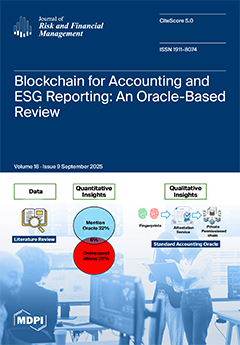Background: Life insurance markets are experiencing unprecedented transformation in the wake of economic disruption, evolving consumer expectations, and behavioral shifts following the COVID-19 pandemic. Traditional economic models often fail to capture the complex interplay of attitudinal, and cognitive factors that now shape insurance
[...] Read more.
Background: Life insurance markets are experiencing unprecedented transformation in the wake of economic disruption, evolving consumer expectations, and behavioral shifts following the COVID-19 pandemic. Traditional economic models often fail to capture the complex interplay of attitudinal, and cognitive factors that now shape insurance demand and premium selection.
Methods: This study analyzes nationally representative survey data from over 3600 U.S. adults (2024 NAIC Financial Inclusion Survey). It uses a weighted full maximum likelihood Heckman selection model to identify determinants of life insurance uptake and premiums. The main innovation is modeling psychological price, a composite of perceived affordability, with higher-order polynomials. The design integrates psychometrically validated measures of financial knowledge and risk tolerance. Political ideology, race and ethnicity, and sources of financial advice serve as exclusion restrictions in the selection equation.
Results: Psychological price shows an inverse-U relation with term outcomes: uptake rises at low to moderate affordability and declines at high affordability; among purchasers, term premiums rise at low to mid affordability and decline at high levels. For cash value policies, premiums decrease as psychological price increases. Financial knowledge and risk tolerance increase term uptake; financial knowledge reduces cash premiums. Education and income increase term uptake and term premiums. Compared with respondents reporting no ideology, conservative and centrist respondents have lower term uptake and higher cash uptake; using a professional advisor is associated with higher cash uptake. The selection correlation is positive for term (
) and negative for cash (
), indicating non-random selection in both markets.
Implications: In order to reduce disparities, insurers should target the mid-affordability threshold with term offerings, streamline options for high-affordability consumers, offer pricing support and guidance for low-affordability households, increase uptake through advice channels and financial education, and address affordability barriers.
Conclusions: Nonlinear affordability effects shape both market entry and pricing choices. Modeling psychological price with higher-order polynomials identifies thresholds and turning points that linear specifications miss. The results support targeted product design and outreach when perceived affordability drives insurance participation and premium choices.
Full article




